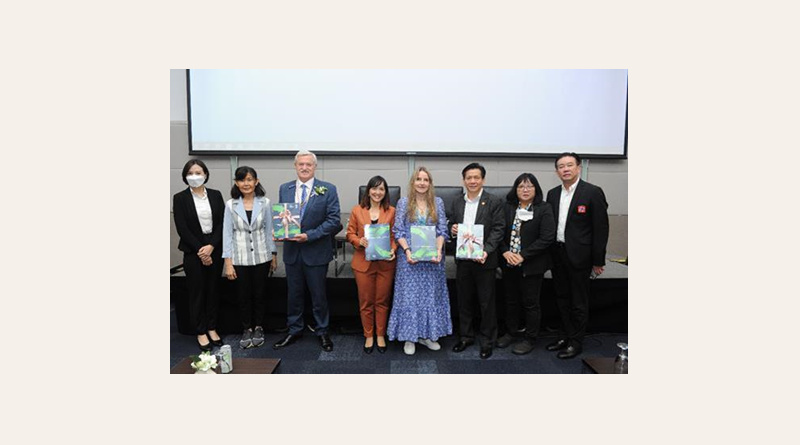WPO participated at ProPak Asia and launched the ‘Global Packaging Design for Recycling Guide’ translated to Thai
The World Packaging Organisation (WPO) was pleased to launch during ProPak Asia, in Bangkok, the Thai version of the ‘Global Packaging Design for Recycling Guide’; this version is the 10th translation and is already available for free download in WPO website. “The document is a starting point to understand best practice examples using state-of-the-art technology, to be applied and tailored to suit the recovery and recyclability capabilities and infrastructure on a regional and local level. And there would not be a better place to launch it than ProPak Asia, a trade show that is a reference to the industry”, states WPO President Pierre Pienaar.
Together with Pierre, attending the show and hosting visitors in WPO booth, were Senior Vice President Marketing and President elected, Luciana Pellegrino; Vice President Sustainability & Save Food, Nerida Kelton; Vice President Events and WorldStar Coordinator, Soha Atallah; and members from Asia, as the Thai Packaging Association, coordinated by Patra Khunawat.
The ‘Global Packaging Design for Recycling Guide’ was translated by the Sukhothai Thammathirat Open University and the official launch ceremony was conducted by Jeeranuch Buddeejeen, Ph.D.,Lecturer, School of Science and Technology at the Sukhothai Thammathirat Open University. In her speech, Buddeejeen said, “I hope that all of the young packaging designers at universities and entrepreneurs in the packaging industry globally can gain knowledge and understanding of the standard for circular packaging design that is set out in this guide. I believe that good packaging design will help Thai people to have a better quality of life and make our planet better”. The WPO ‘Global Packaging Design for Recycling Guide’ will be available in the university’s central library and 10 campus libraries so that is accessible to everyone to use.
“Design for recycling is part of circular product design and represents an important basis for holistic sustainability assessment. Accordingly, circularity means that the packaging is designed in such a way that the highest possible recycling of the materials in use can be achieved. The goals here are resource conservation, the longest possible service life, material-identical recycling (closed-loop recycling) or the use of renewable materials. Circular packaging should therefore be designed and manufactured in such a way that it can be reused (reusable solution) and/or that the raw materials used can be reused to a large extent as secondary raw materials after the use phase (recycling) and/or consist of renewable raw materials,” says Nerida.
The WPO, Circular Analytics, FH Campus University of Applied Sciences, and ECR Community have developed the ‘Packaging Design for Recycling Guide’.

